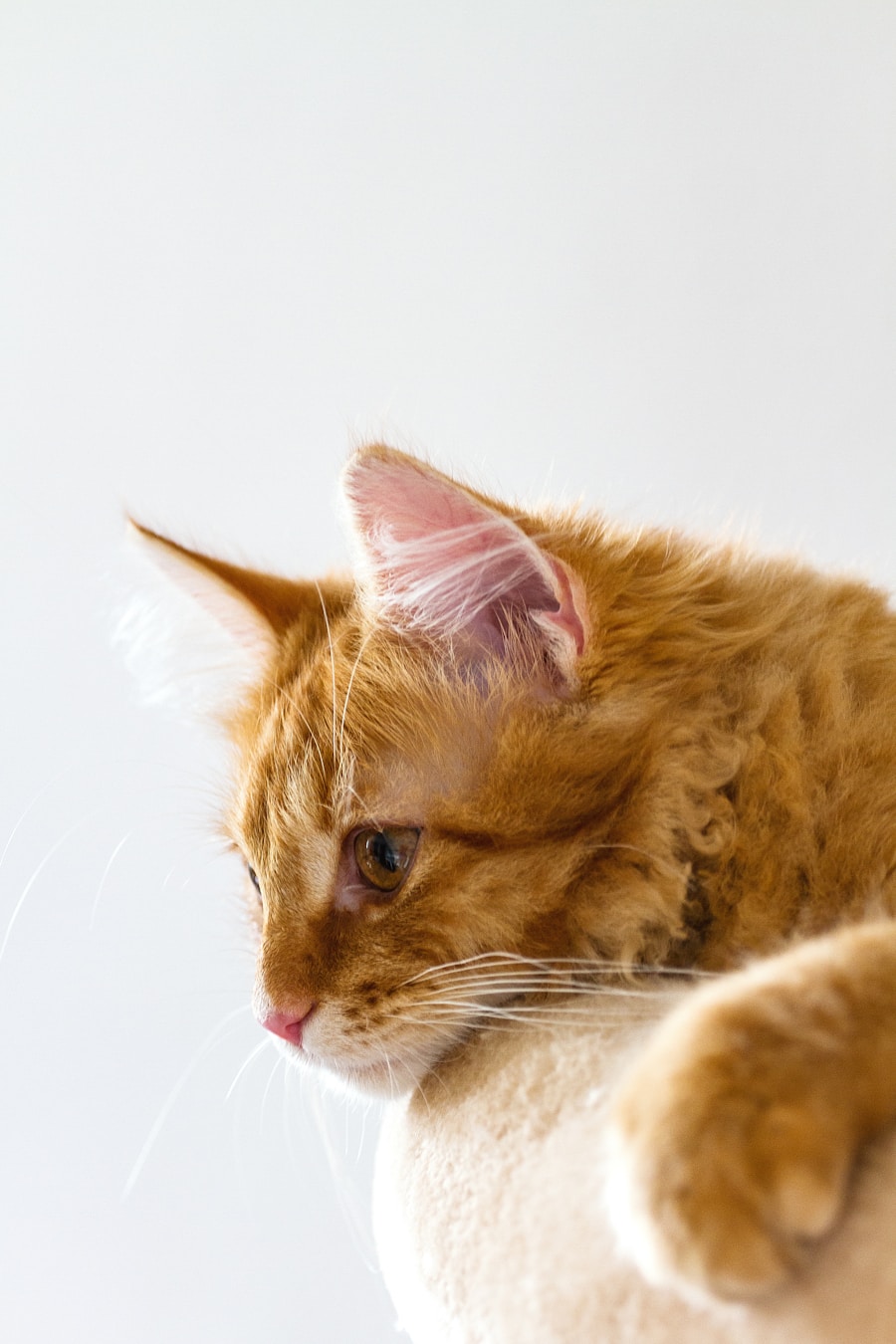Ear mites, scientifically known as Otodectes cynotis, are microscopic parasites that primarily inhabit the ear canals of cats, although they can also affect dogs and other animals. These tiny arachnids thrive in warm, dark environments, making the ear canal an ideal habitat. Ear mites are highly contagious and can easily spread from one animal to another through direct contact.
They are particularly prevalent in environments where multiple animals coexist, such as shelters or multi-pet households. Understanding the biology and behavior of these parasites is crucial for effective management and treatment. The life cycle of ear mites is relatively short, typically lasting about three weeks.
Adult mites lay eggs in the ear canal, which hatch into larvae and then develop into adults. This rapid reproduction can lead to a significant infestation in a short period. Ear mites feed on the wax and oils present in the ear canal, leading to irritation and inflammation.
While they are not directly harmful to cats, the secondary infections and discomfort they cause can lead to more serious health issues if left untreated. Recognizing the signs of an infestation early on is essential for prompt treatment and to prevent complications.
Key Takeaways
- Ear mites are tiny parasites that can infest a cat’s ear canal, causing irritation and discomfort.
- Signs of ear mite infestation in cats include excessive scratching, head shaking, and dark discharge in the ears.
- When choosing ear mite medication for your cat, consult with a veterinarian to determine the most effective and safe option.
- Topical treatments for ear mites, such as ear drops or ointments, are commonly used to kill mites and soothe irritation.
- Oral medications, such as prescription pills or liquid formulations, can also be used to treat ear mites in cats.
Signs and Symptoms of Ear Mite Infestation
Physical Signs of Ear Mites
One of the most common indicators is excessive scratching or rubbing of the ears. Cats may shake their heads frequently or tilt them to one side in an attempt to alleviate the discomfort caused by the mites. This behavior is often accompanied by a characteristic dark, crumbly discharge in the ear canal, which is a mixture of ear wax, blood, and mite debris.
Behavioral Changes.
In addition to physical signs, cats may exhibit behavioral changes due to the irritation caused by ear mites. Increased vocalization or signs of distress when their ears are touched can indicate discomfort.
Complications and Treatment.
In severe cases, inflammation and swelling of the ear canal may occur, leading to a condition known as otitis externa. If left untreated, this can result in more serious complications such as ear infections or even hearing loss. Observing these symptoms closely and seeking veterinary advice is crucial for effective treatment.
Choosing the Right Ear Mite Medication for Your Cat

When it comes to treating ear mite infestations, selecting the appropriate medication is vital for ensuring your cat’s health and comfort. There are various options available, including topical treatments, oral medications, and natural remedies. The choice of medication often depends on the severity of the infestation, the age and health status of the cat, and any underlying conditions that may complicate treatment.
Consulting with a veterinarian is essential to determine the most effective course of action tailored to your cat’s specific needs. Veterinarians may recommend over-the-counter treatments or prescribe stronger medications based on their assessment. It is important to follow their guidance closely, as improper use of medications can lead to ineffective treatment or adverse reactions.
Additionally, some products may not be suitable for kittens or pregnant cats, so understanding the specific requirements for your pet is crucial. Always read labels carefully and ensure that any chosen medication is specifically formulated for use in cats.
Topical Treatments for Ear Mites
| Treatment | Success Rate | Duration of Treatment |
|---|---|---|
| Prescription Medication | 90% | 2 weeks |
| Over-the-Counter Medication | 80% | 3 weeks |
| Natural Remedies | 70% | 4 weeks |
Topical treatments are among the most common methods for addressing ear mite infestations in cats. These medications typically come in the form of drops or ointments that are applied directly into the ear canal. One popular topical treatment is ivermectin, which works by paralyzing and killing the mites upon contact.
Another effective option is selamectin, which not only targets ear mites but also protects against other parasites such as fleas and ticks. When using topical treatments, it is essential to follow the instructions provided by your veterinarian or on the product label meticulously. The application process usually involves gently cleaning the ear canal before administering the medication to ensure maximum effectiveness.
It is also important to avoid using cotton swabs inside the ear canal, as this can push debris further in and potentially cause injury. Regular follow-up appointments with your veterinarian may be necessary to monitor progress and determine if additional treatments are required.
Oral Medications for Ear Mites
In some cases, oral medications may be recommended for treating ear mite infestations in cats. These medications work systemically to eliminate mites throughout the body rather than just targeting those present in the ear canal. One commonly prescribed oral medication is milbemycin oxime, which has proven effective against various parasitic infections, including ear mites.
Another option is fluralaner, which is often used in combination with topical treatments for enhanced efficacy. Oral medications can be particularly beneficial for cats that are difficult to handle or those that resist topical applications. However, it is crucial to administer these medications under veterinary guidance, as dosages must be carefully calculated based on the cat’s weight and overall health status.
Monitoring for any side effects during treatment is also important, as some cats may experience gastrointestinal upset or other adverse reactions.
Natural Remedies for Ear Mites in Cats

For pet owners seeking alternative approaches to treating ear mites, several natural remedies may offer relief. While these remedies may not be as potent as pharmaceutical options, they can provide supportive care and help alleviate symptoms associated with infestations. One popular natural remedy is apple cider vinegar diluted with water, which can be used as a gentle cleaning solution for the ears.
Its acidic properties may help create an inhospitable environment for mites while also reducing inflammation. Another natural option is coconut oil, which has antimicrobial properties that can aid in soothing irritated skin within the ear canal. Applying a small amount of warm coconut oil can help soften wax buildup and facilitate easier cleaning.
However, it is essential to note that while these remedies may provide some relief, they should not replace veterinary care or prescribed treatments for severe infestations. Always consult with a veterinarian before trying any natural remedies to ensure they are safe and appropriate for your cat’s specific situation.
Preventing Future Ear Mite Infestations
Preventing future infestations of ear mites requires a proactive approach that includes regular monitoring and maintenance of your cat’s overall health. One effective strategy is to maintain a clean living environment by regularly cleaning bedding, toys, and any areas where your cat spends time. This helps reduce the likelihood of mites being introduced into your home from other animals or environments.
Additionally, routine veterinary check-ups are essential for early detection of potential issues before they escalate into infestations. Regular grooming sessions can also help keep your cat’s ears clean and free from excess wax buildup that might attract mites. If you have multiple pets, it’s crucial to monitor them closely for any signs of infestation and treat all affected animals simultaneously to prevent reinfestation.
Tips for Administering Ear Mite Medication to Your Cat
Administering medication to a cat can be a challenging task due to their independent nature and sometimes unpredictable behavior. To make the process smoother, it’s helpful to create a calm environment before beginning treatment. Choose a quiet space where your cat feels comfortable and secure.
Gently restraining your cat by wrapping them in a towel can prevent sudden movements and make it easier to apply topical treatments or administer oral medications. When applying topical treatments, ensure you have everything ready before you begin—this includes the medication itself, cotton balls for cleaning if necessary, and treats for positive reinforcement afterward. For oral medications, consider using pill pockets or mixing crushed tablets with a small amount of wet food to encourage ingestion.
Always reward your cat with praise or treats after administering medication to create a positive association with the process. Patience and consistency are key; over time, your cat may become more accustomed to receiving treatment without stress or resistance.











